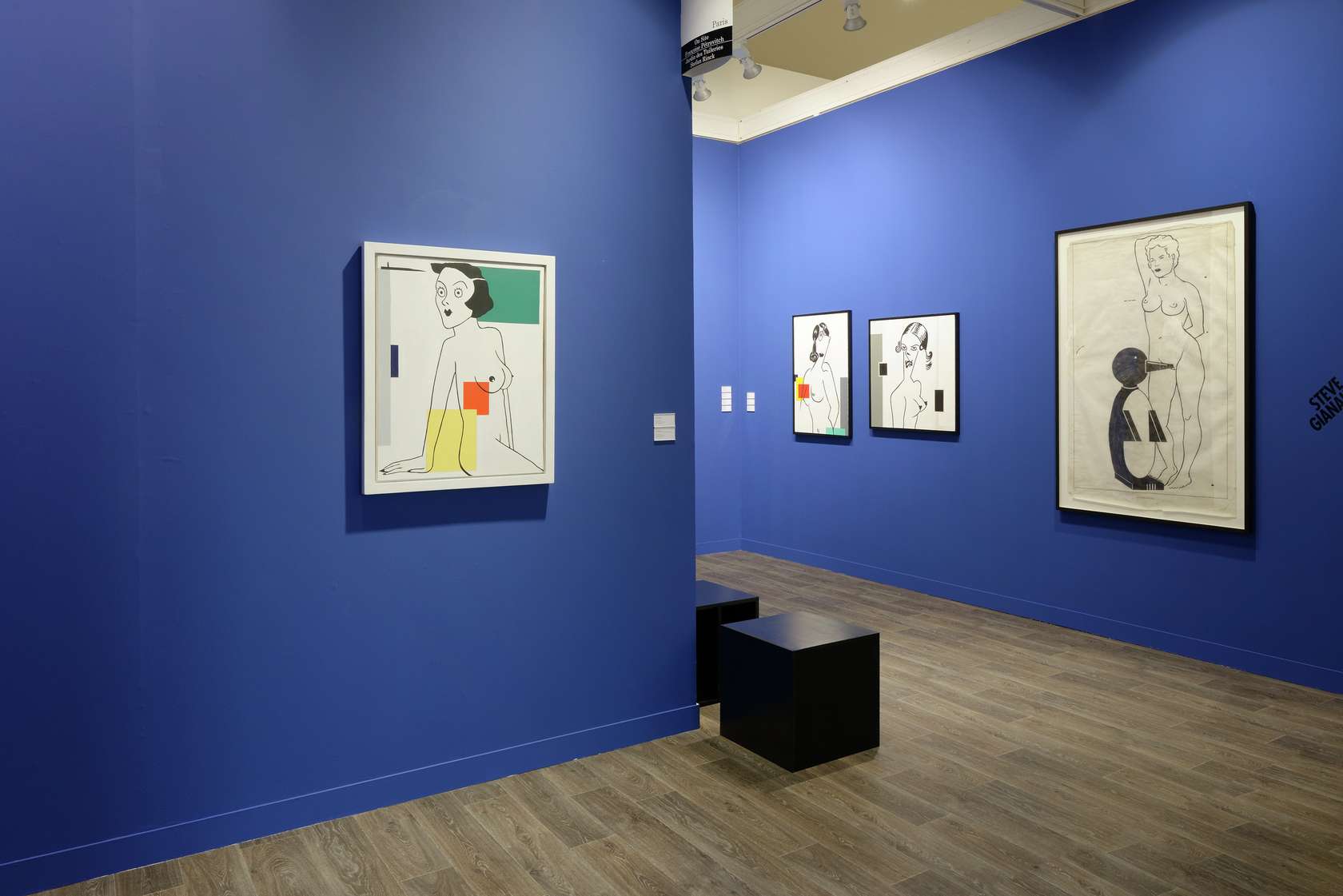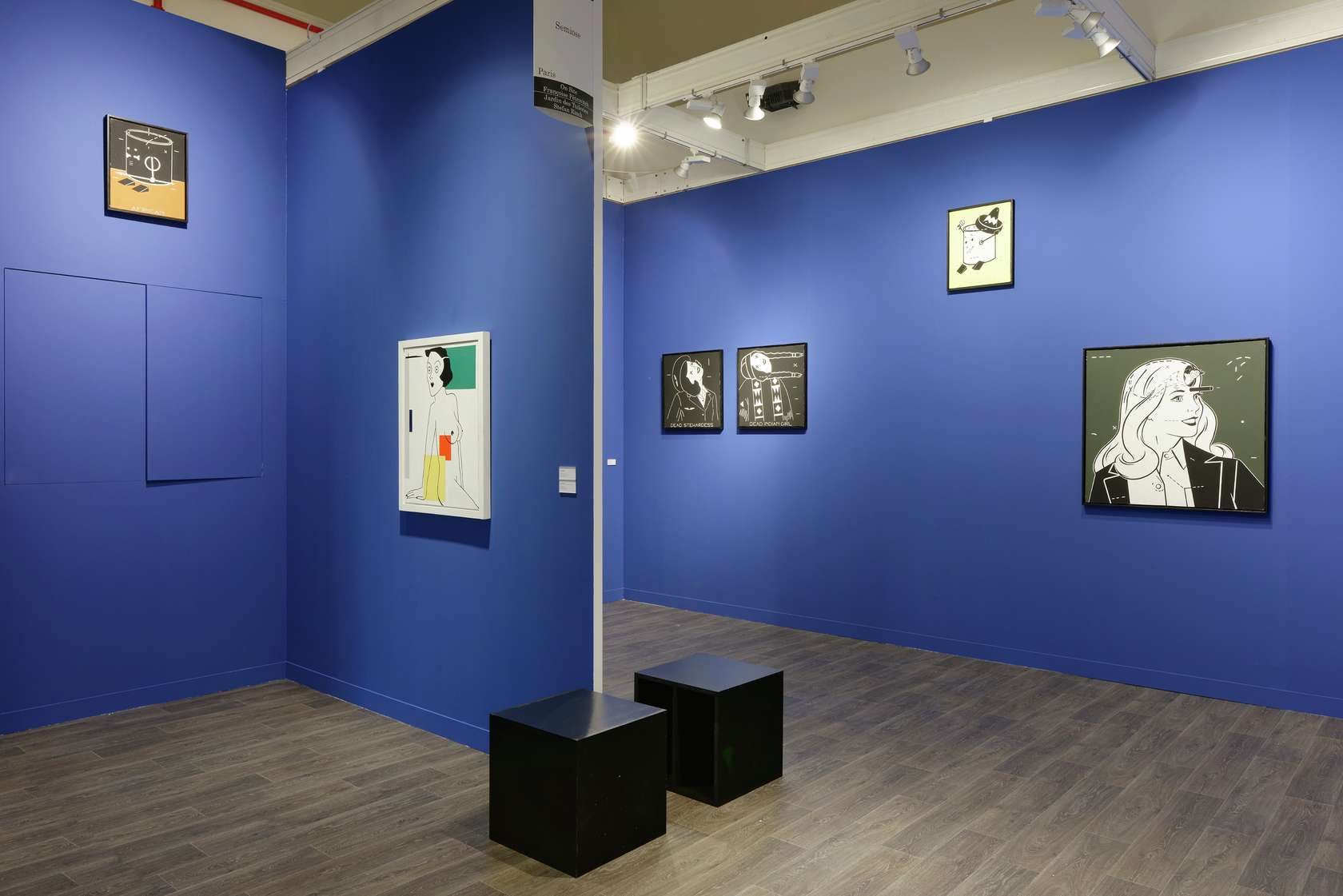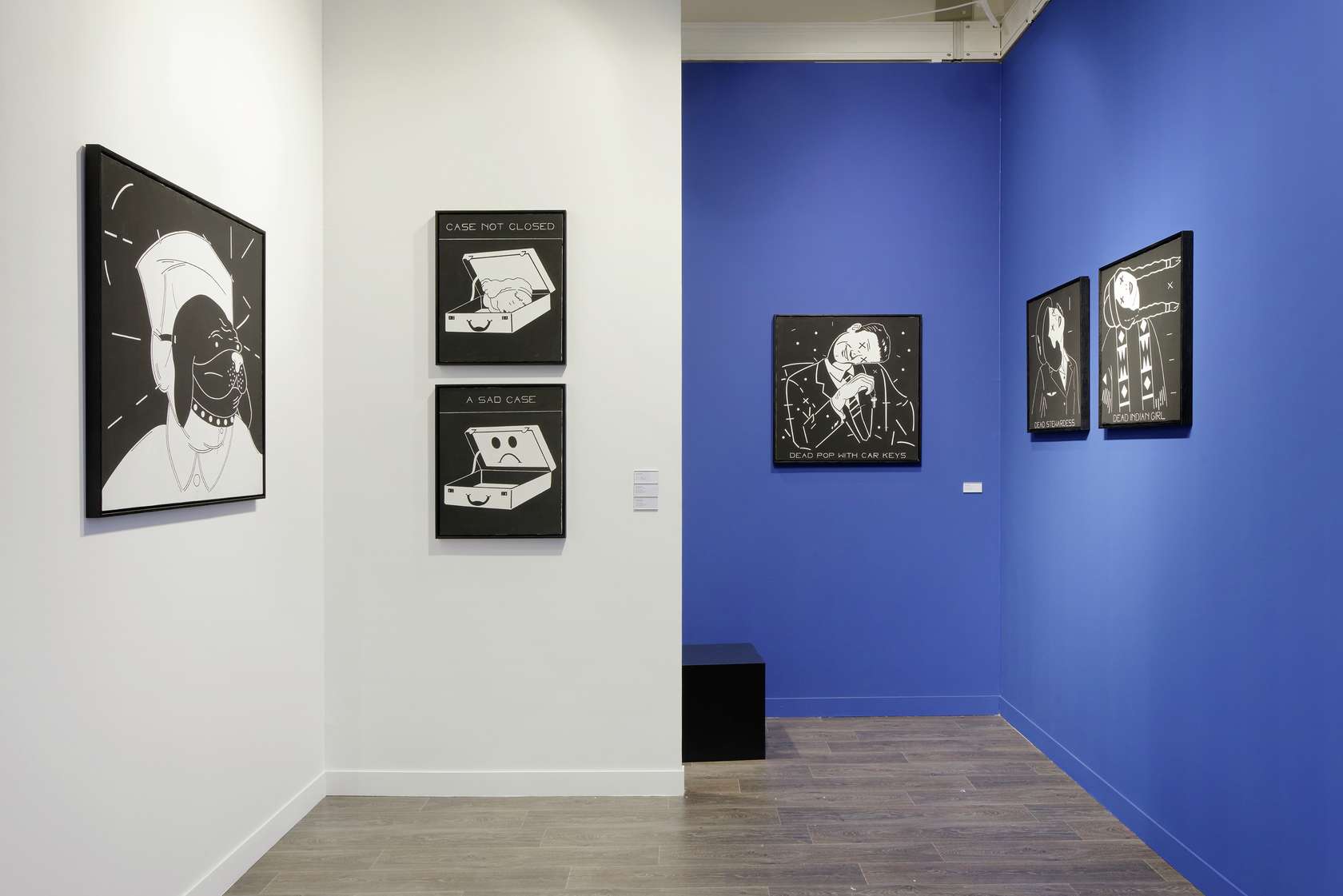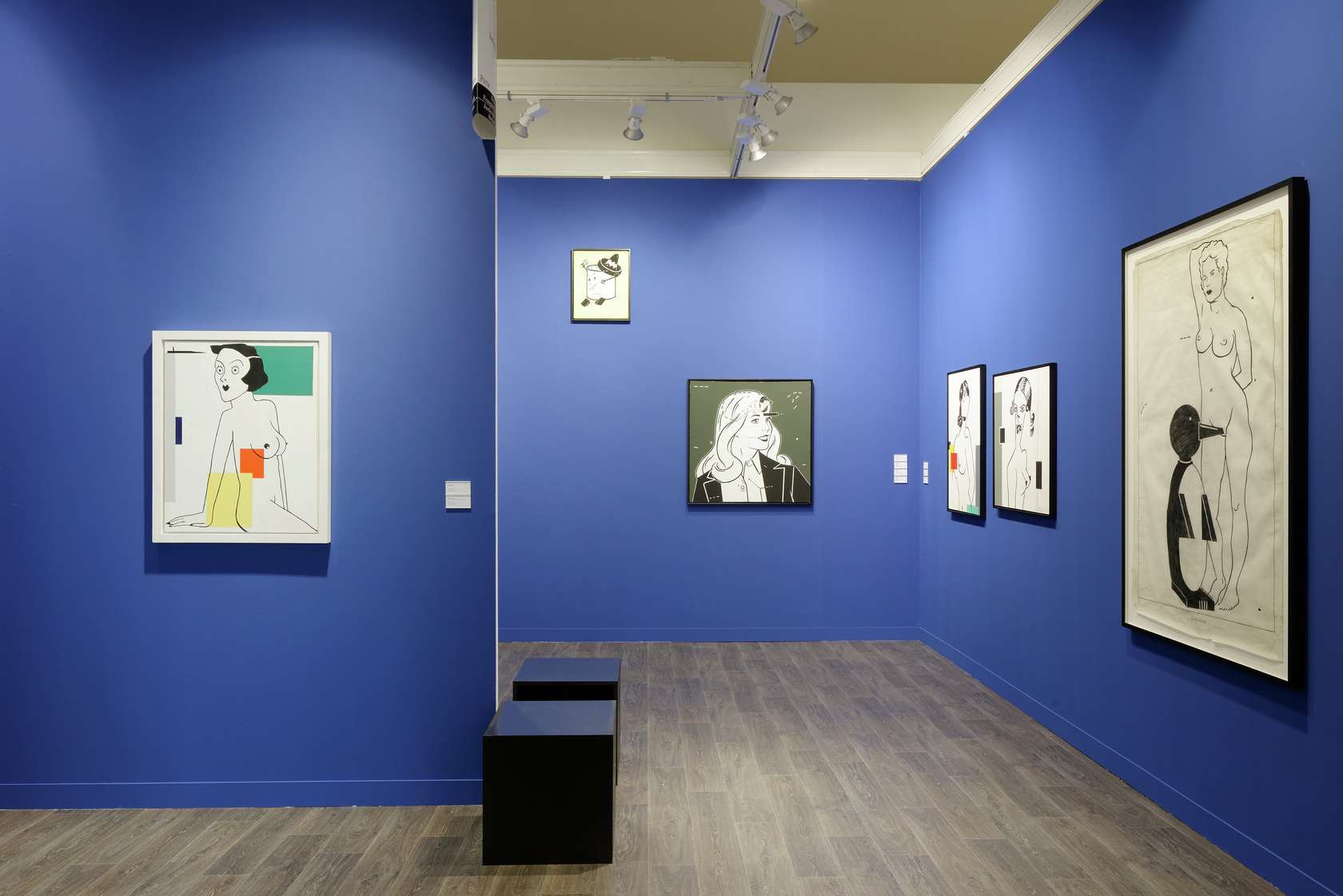-
 1/4
1/4
Steve Gianakos, Fiac, Paris (FR)
-
 2/4
2/4
Steve Gianakos, Fiac, Paris (FR)
-
 3/4
3/4
Steve Gianakos, Fiac, Paris (FR)
-
 4/4
4/4
Steve Gianakos, Fiac, Paris (FR)
Born in Harlem in 1938, Steve Gianakos seems to be one of those artists blessed with eternal youth, like certain screen actors remaining ?forever young?. Relatively unrecognized, he appears, as Robert Storr confirms, ?to have made himself scarce after achieving a certain visibility?if not notoriety?early in his career.? Despite this apparent modesty, the MoMA, Whitney and Guggenheim amongst others, have afforded him a prominent place in their collections and his works have regularly seen the light of day in shows such as ?Exquisite Corpses? at the MoMA in 2012.
Following a resurge in interest for the fringes of art from the 80s, Europe has also recently begun to court Steve Gianakos, notably Maastricht?s Bonnefantenmuseum, with the exhibition ?Exile On Main Street? alongside John Wesley and Richard Artschwager. France is no exception: after a second solo show at Semiose Gallery in January 2017, which generated a deal of media excitement (Arte, France Culture, Les Inrocks, etc.), he is lined up for an exhibition in a major Paris museum and the Dole Museum of Fine Art has organized a solo show dedicated to his oeuvre in June 2017.
Ten years younger than Andy Warhol and Roy Lichtenstein?for whom he has expressed great (apparently reciprocal) esteem?Steve Gianakos is associated with Pop Art through the popular media he employs and his taste for the genre?s illustrated output: DC Comics and adult comic strips. But that?s where this association comes to a halt: the relationship he cultivates with his subjects is far too oblique and Pop Art has today taken on the guise of a factory for commercial imagery. His painting, on the contrary, due to its political and critical leaning, belongs more to ?an insolent and impolite vein of the counter-culture, a kind of sardonic pop? as Judicaël Lavrador stated in the newspaper Libération (Jan. 2017).
Steve Gianakos mines a wide variety of graphic sources and completely transforms original documents to produce a style of work that is resolutely his own, founded in the great attention he brings to bear on the technical aspect of his oeuvre. He has forged his own instantly recognizable style, maintained with remarkable consistency. Objects and patterns are treated as symbols, brought together in phrases, redefined and honed to perfection. The images the artist produces are most often declined in series, frequently over several decades in time.
The works assembled for the FIAC are exceptional in that Gianakos?s paintings from the 80s are extremely rare. The scenography of the stand is intended to be discretely spectacular: midnight blue walls and matt black flooring subliming the black and white contrasts of the canvasses in an allusion to the night-clubs of the 80s. An environment drawing the eye and all of the attention deserved by this hugely under-estimated body of work.